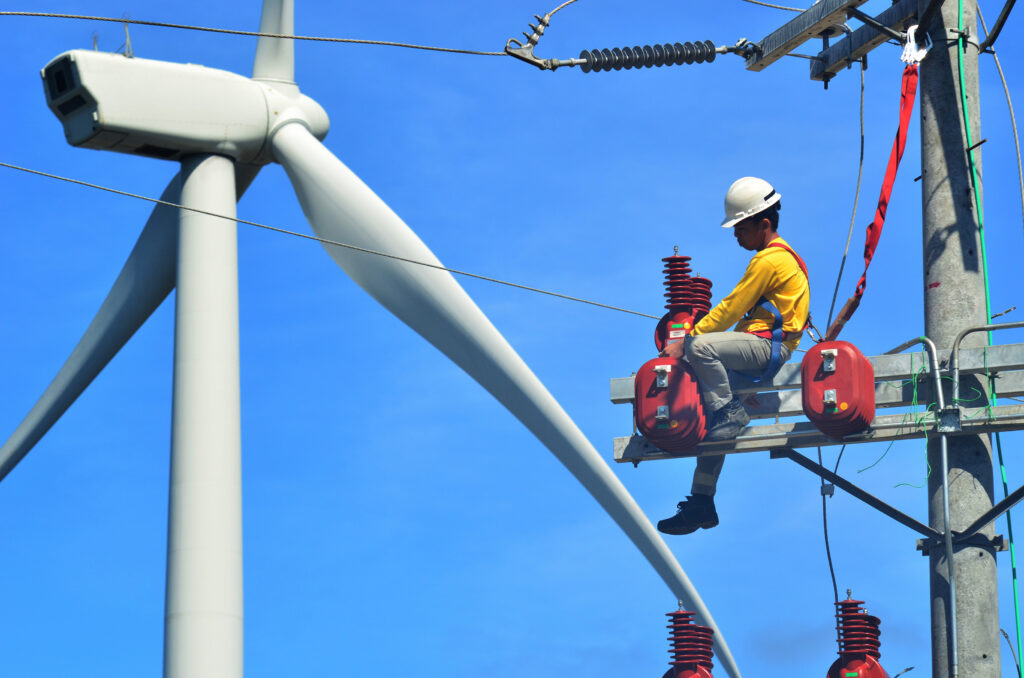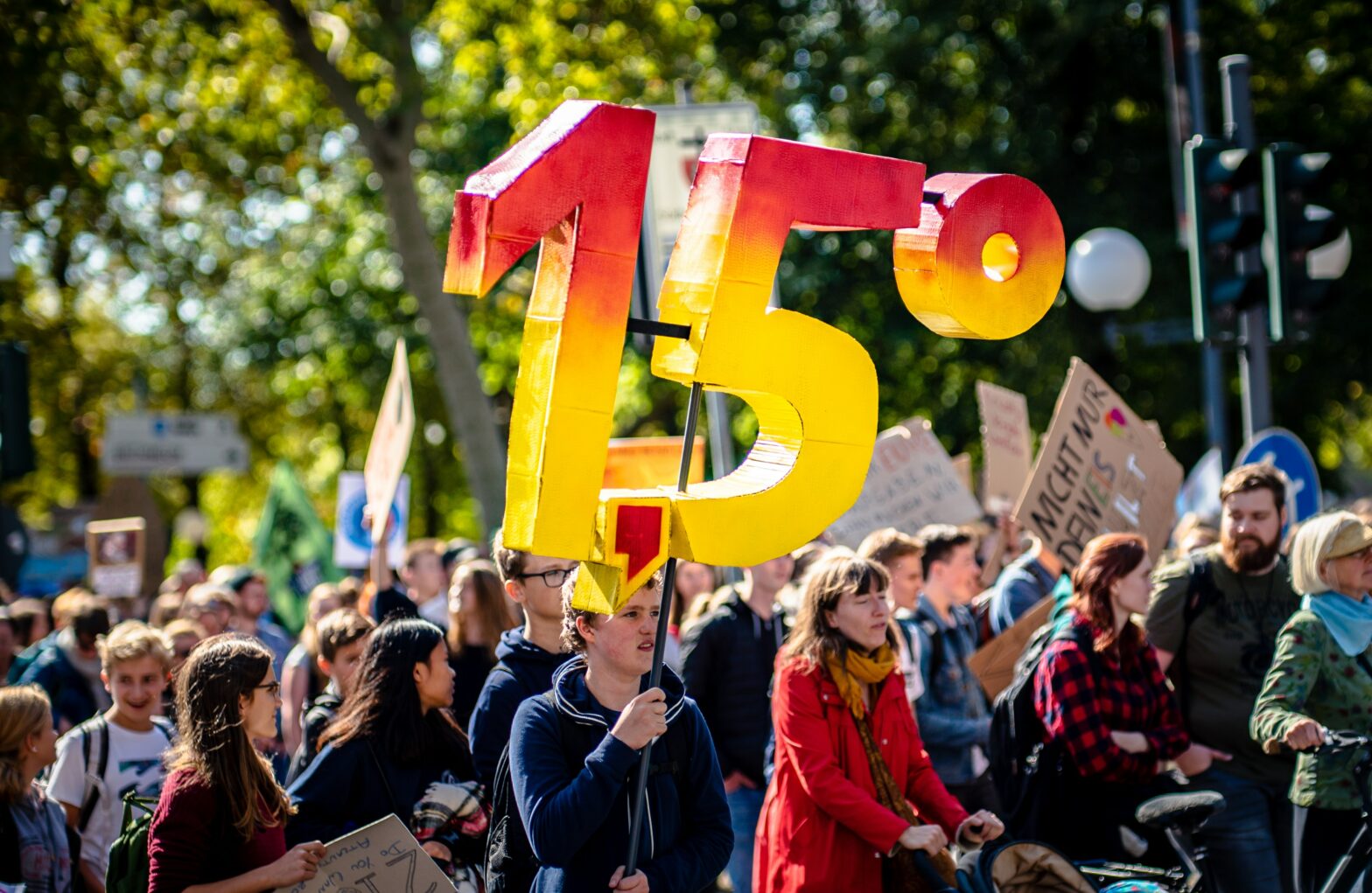Share Twitter Facebook Email Copy URL
The Green New Deal means finding common ground
Is the Green New Deal dead? Bernie Sanders lost the US Democratic primaries and Great Britain’s Labour Party failed miserably with their Green New Deal election platform. In Germany, a Green New Deal has never really been able to get off the ground. Astute members of the Left have roundly pointed out that even the progressive Green New Deal is based on “ecologically insufficient” concepts and offers no real alternative to the colonial system of economic growth which is at the root of the climate crisis. At the latest when EU Commission President Ursula von der Leyen announced her “competitive” Green Deal for Europe, the phrase became code for green capitalism—scorched earth for the left-leaning climate justice movement.

So why am I still hung up on the idea of a Green New Deal?
We are still waiting for a platform with mobilization potential that outlines a path to limit global warming to 1.5 degrees, and addresses the glaring social injustice currently being exacerbated even further by the coronavirus crisis.
The usual climate-change narrative about emissions reductions and “net zero” reeks of abandonment, landscapes blemished by green-energy farms, and job loss. “Net” makes me feel like I’m doing my taxes. And when did net-zero-anything ever gain political clout? Even “climate neutrality” fails to evoke images of a different society worth fighting for. Tucked away in desk drawers are manifestoes evidencing greater imagination and networked thinking, yet there is no broad majority demanding their implementation. Or they describe a future utopia, without offering blueprints for how an industrial society can get there step by step.
The US version of the GND excites me because it is a plan for climate action that’s centred on justice, while appearing incredibly “doable” at the same time. It not only calls for emissions reductions, but proposes concrete actions that would improve people’s quality of life. That means it has potential for strong public support.
From Bernie to Biden
The GND Resolution introduced in 2019 by Democratic congresswoman Alexandra Ocasio-Cortez and Senator Ed Markey gained great momentum in part thanks to the youth-driven Sunrise Movement. Sunrise openly supported Bernie Sanders, whose Democratic primary campaign was based on the Green New Deal. Nevertheless, the neoliberal candidate Joe Biden, who initially put forth a rather weak environmental plan, won the primary election. But that doesn’t mean that the Green New Deal movement wasn’t successful. Biden knew that to beat Trump he would have to win over Bernie’s young, radical constituency—and to do so, he had to ramp up his climate policies.
The “Biden Plan for a Clean Energy Revolution and Environmental Justice” doesn’t go as far as climate activists would have hoped, but Sunrise still praised it as “the most ambitious presidential climate plan yet”. Voices from both anti-racist as well as environmental justice movements ring out clearly in the plan. It notes that People of Colour and low-income populations in particular are affected by the climate crisis, and states that any measures to combat climate change will specifically take them into account. Time will tell if this promise translates into actual material gains.
Biden won the presidency only thanks to progressive social movements, which gave their all last year to prevent Trump’s re-election, or a coup. Even if it meant supporting, through gritted teeth, a Democratic establishment candidate. “I’d rather fight against Biden than against Trump”, an activist friend from St. Louis, who usually stays out of partisan politics, told me at the height of the election campaign.
Biden’s putting a halt to the Keystone XL pipeline during his first days in office is a cause for hope, as is his appointment of Deb Haaland as Secretary of the Interior—the preferred candidate of Indigenous activists. But of course that doesn’t mean the activists can all pack up and go home now. They have to keep the pressure up in order to steer Biden’s government into taking greater action for social and climate justice.
Transform, Heal, Renew, Invest
The groups that fought for the Green New Deal are still active today, now fighting for the THRIVE agenda. The platform is similar to the Green New Deal Resolution, but takes into account the current state of things as a result of the pandemic. It’s also an attempt to broaden the tent, in order to make room for more groups to come together, including those who fought in different camps during the Democratic primaries. Whereas Sunrise still stands behind its call for a “Green New Deal”, on THRIVE’s website the phrase appears only in fine print. This is an obvious attempt to also appeal to groups wary of the GND rhetoric.
THRIVE is an acronym for “Transform, Heal and Renew by Investing in a Vibrant Economy”—a bold plan that addresses “the inequality and racism that the COVID-19 pandemic has laid bare”. It is built on eight pillars, including creating millions of safe jobs, averting climate and environmental catastrophe, investing in public institutions, and enabling unionization. Their frequent repetition of the word “safe” (“Keep communities safe”) is striking. It is clearly appealing to people who feel threatened by future “changes”, e.g. because their living conditions are precarious as it is. The resolution’s central calls include investing in “Black, Brown, and Indigenous communities” and “healing the nation-to-nation relationship with sovereign Native Nations”. Instead of getting bogged down by class and identity politics, movements in the US are finding practical solutions to both.
The document references the effort to overcome social divisions and acknowledges that this can only be achieved if the nation confronts its colonialist and racist past. It reveals an intersectional understanding of the current crisis—and is thus light years ahead of the mainstream discourse in Germany.
In addition to environmental organizations like the Sierra Club, the resolution has been backed by unions such as the Association of Flight Attendants as well as the Sunrise Movement, the Movement for Black Lives, and the Indigenous Environmental Network, along with more than 100 members of Congress and the US Secretary of the Interior Deb Haaland. And that is arguably THRIVE’s decisive strength: the alliance is active in the streets, in civil society, and the institutions of congress, in order to establish a countervailing system of power to develop their concrete reform projects—even when faced with resistance from within the Democratic Party. Like the GND movement, THRIVE views opposition within and outside of Congress not as competition, but as complementary agents for change.
Finding Common Ground
Ever since Helmut Kohl made his promise for the future of East Germany, it’s been unthinkable to call any economic development programme “thriving” in this country. But let’s drop the question of how to name the baby and instead focus on what we can learn from initiatives like THRIVE and the GND movement. They call for actions that are visionary enough to inspire people, yet realistic enough that they could be implemented tomorrow. They highlight commonalities between very different interest groups. Instead of the “countdown panic” or emissions penny-pinching, they offer a narrative of strong social groups working together to build a more just society.
Emissions reduction is an important goal, but as a compass for political action, it’s useless. Whoever places CO2 atmospheric measurements and temperature curves at the foreground of the climate debate hopes, by virtue of being “objective” and “scientific”, to gain traction across all parties and camps. But the conclusions that we draw from scientific facts are never neutral. If people in Zimbabwe using solar cookers offsets the carbon footprint of frequent fliers, it might cancel out somehow in an Excel chart—but according to my values, it is anything but climate justice.
The left-wing climate justice movement is well aware that greenhouse gas emissions are merely the symptom of a series of interwoven crises. Nevertheless, this kind of intersectional analysis has, to this day, hardly been reflected in the sites of their protests—in recent years, primarily at the major sources of emissions. Our ideas for transforming society have to find a way into the conversation somehow. Images of protestors at “sites of destruction” clearly get across the demand to shut down the fossil fuel industry. But to do so would lead to massive job loss—a problem that we as a society still have no good answer for.
It was and remains urgently necessary to wage concrete defensive campaigns against highways and power plants, and to draw attention to social conflicts. But the climate movement should also take action that emphasizes common ground with other interest groups.
Instead of arguing about whether terms like capitalism and growth should appear in our shared resolutions, we should outline first steps for translating our demands into agreed-upon measures that have potential to gain traction. This might include reduced working hours, investing in healthcare and education, or “putting caregiving at the centre of economic activity, in order to value it and ensure that it is fairly allocated”.
In many instances, this has already begun. In June, for example, climate groups in Berlin called for hospital workers to rally under the slogan “Coal for hospitals instead of power plants” (the German word for coal, Kohle, is also slang for money). Instead of inviting overworked hospital staff to protest by sitting in front of coal trains, the groups also supported their demands for more staff, better working conditions, and greater financial recognition. This collaboration produced a lasting network that advocates for putting people’s needs and rights at the centre of public services—instead of corporate profits. If we succeed in shifting social power relations in this sense, emissions will sink all by themselves.
We need to be everywhere that people are fighting for better working and living conditions, for the redistribution of wealth and for democracy—in short, wherever human rights are at stake. That’s how we will discover what unites us. I would like us to pitch a tent so broad that people from diverse social sectors can come together beneath it—and by doing so, form a broad base committed to a just and ecologically sustainable social transformation.
Dorothee Häußermann organizes campaigns for climate justice and phasing out coal, writes columns and political novels (Wind aus Nord-Süd), and is an activist worker for the Bewegungsstiftung. The article was first published on rosalux.de.



